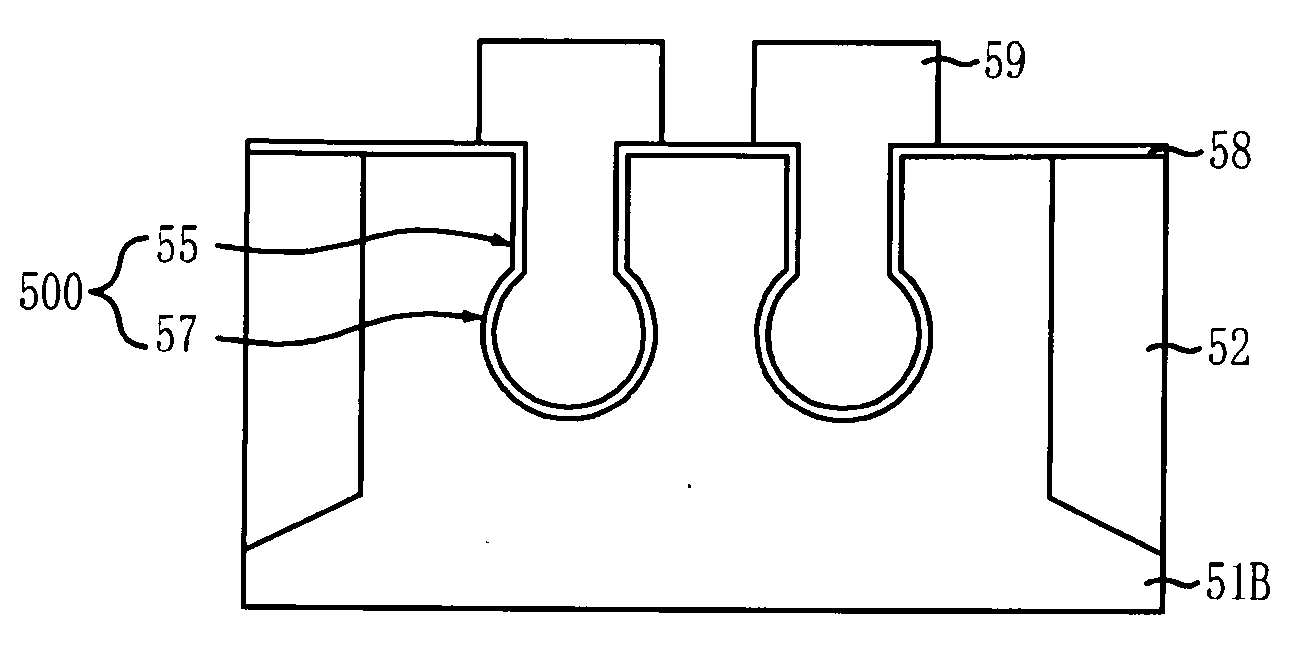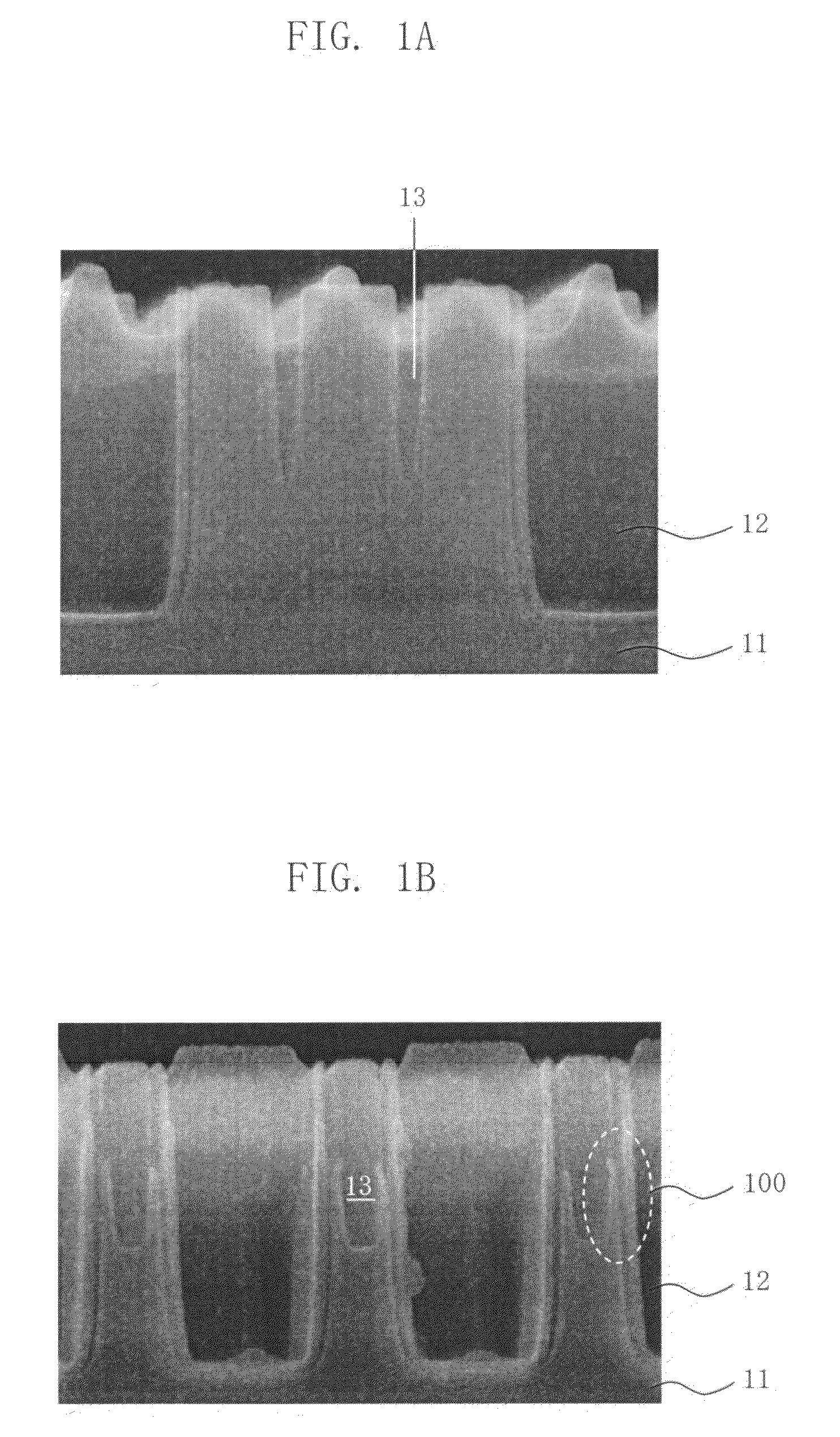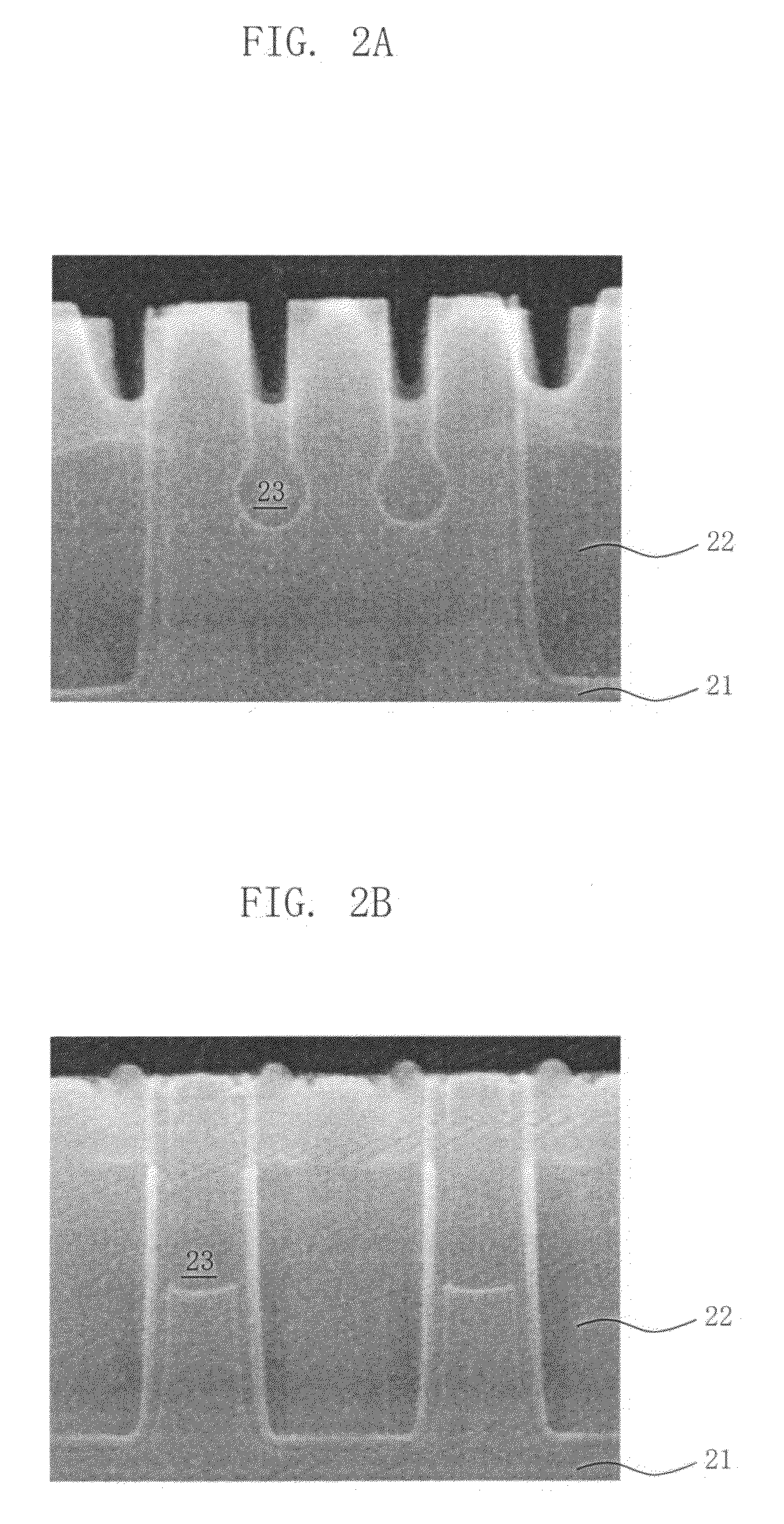Method for fabricating semiconductor device with recess gate
- Summary
- Abstract
- Description
- Claims
- Application Information
AI Technical Summary
Benefits of technology
Problems solved by technology
Method used
Image
Examples
Embodiment Construction
[0022]FIGS. 5A to 5G illustrate cross-sectional views of a method for fabricating a transistor with a recess gate in accordance with an embodiment of the present invention.
[0023]Referring to FIG. 5A, an isolation layer 52 is formed in a substrate 51 to define an active region. The substrate 51 is selectively etched to form a trench and an insulation layer is formed to fill the trench. The insulation layer is planarized to form the isolation layer 52. A sacrificial oxide layer and a hard mask are successively stacked over the substrate 51 and the isolation layer 52 and a photoresist pattern (not shown) is formed over the hard mask. The hard mask and the sacrificial oxide layer are successively etched by using the photoresist pattern as an etch mask. Thus, a first mask pattern 53 and a second mask pattern 54 are formed to define a recess target region over the substrate 51 and the isolation layer 52.
[0024]The first mask pattern 53 protects the substrate 51 from a top attack and can be...
PUM
 Login to View More
Login to View More Abstract
Description
Claims
Application Information
 Login to View More
Login to View More - R&D
- Intellectual Property
- Life Sciences
- Materials
- Tech Scout
- Unparalleled Data Quality
- Higher Quality Content
- 60% Fewer Hallucinations
Browse by: Latest US Patents, China's latest patents, Technical Efficacy Thesaurus, Application Domain, Technology Topic, Popular Technical Reports.
© 2025 PatSnap. All rights reserved.Legal|Privacy policy|Modern Slavery Act Transparency Statement|Sitemap|About US| Contact US: help@patsnap.com



